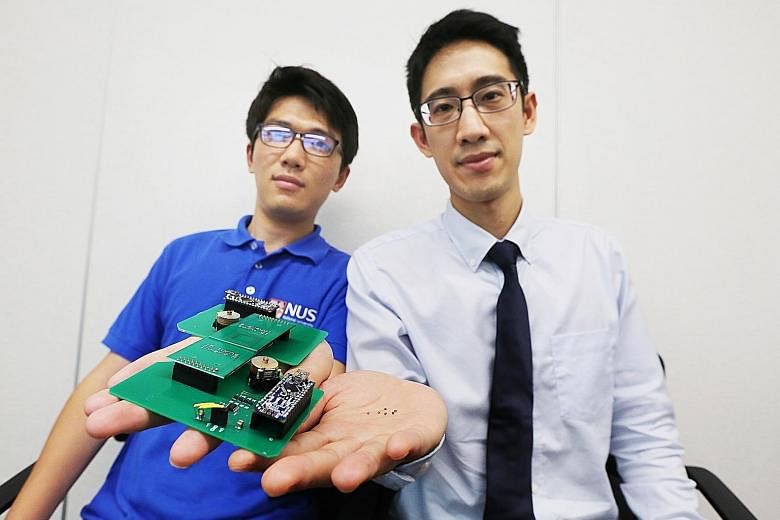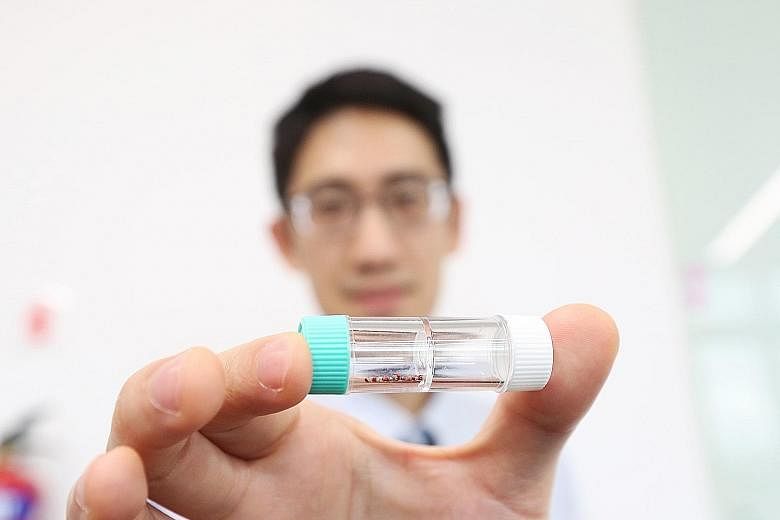Cardiac devices such as pacemakers are crucial for monitoring a person's heart rhythms, but the procedure to implant them is invasive and comes with the risks of infection and skin bruising.
When the devices run out of battery power a few years later, they have to be replaced through another invasive surgical operation. Sometimes, the outline of these devices also protrudes from the skin.
Now, imagine a sensor that is smaller than the tip of a pencil, and can be implanted under the skin using just a syringe. It is also wireless and does not require a battery, which means it could technically last forever. More importantly, the signals that the tiny device sends can be read clearly and easily.
That future has been made possible by researchers at the National University of Singapore (NUS) who have come up with a new way of measuring signals, even those from microsensors less than 1mm long.
Assistant Professor John Ho, from the Department of Electrical and Computer Engineering and the Institute for Health Innovation & Technology at NUS, headed the two-year project. He told The Straits Times: "The problem was never about how small these sensors can be made - they can be manufactured to be very, very tiny. The challenge is that if they're so small, the signals they emit are too tiny to be read at all."
Prof Ho and his team of four researchers have figured out a way to calibrate a wireless reader to work at a state known in physics as an "exceptional point". This is a special state where the reader becomes extremely sensitive to nearby objects, and can thus read tiny signals emitted by even sub-millimetre microsensors.
When the wireless reader is worn outside the body like a watch, for example, patients can monitor their heart rhythms easily and at all times. Such a sensitive reader makes it possible to use sensors at least 10 times smaller than the best implantable wireless cardiac sensors commercially available today.
Prof Ho said: "This breakthrough could really shift the paradigm in healthcare. And it could potentially change much more than just how we monitor heart rhythms - depending on the situation, these tiny sensors could also be developed to monitor a person's glucose levels, for example."
Diabetic patients who must monitor their glucose levels have to prick their fingers to get a drop of blood for testing - a process which may have to be done many times a day. With a tiny implantable wireless sensor, monitoring glucose levels becomes hassle-free.
Prof Ho said: "The important thing here is that sensors can now be made really, really small - and can still be read. We hope that this breakthrough will be a trailblazer for the future of minimally invasive health monitoring situations."



